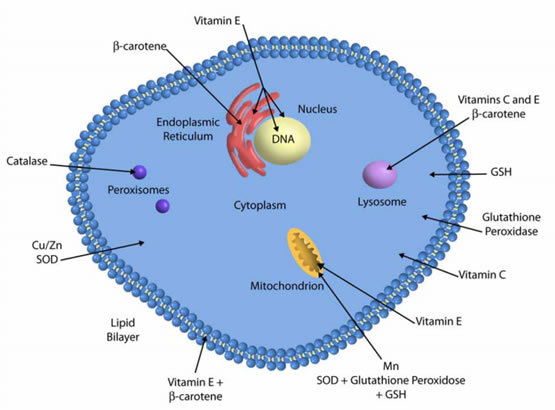
Catalase (CAT) is a ubiquitous enzyme found in nearly all living organisms that are exposed to oxygen. It is present in a wide variety of tissue types and organisms, including:
- Mammalian Liver: Catalase concentrations are particularly high in the liver of mammals[1][2].
- Erythrocytes: It is also found in the cytosol of erythrocytes (red blood cells)[1].
- Microorganisms: Almost all aerobic microorganisms use catalase, and it is even present in some anaerobic microorganisms, such as Methanosarcina barkeri[1].
- Plants: Catalase is universal among plants[1].
- Fungi: It occurs in most fungi[1].
- Various Tissues: The enzyme has been investigated in various plant and animal tissues, including apple, potato, onion, Baker’s yeast, beef steak, and beef liver[1].
- Special Cases: Some insects, like the bombardier beetle, use catalase in a defensive mechanism to eject a hot chemical spray[1].
Catalase is primarily located in peroxisomes, which are organelles that play a key role in the metabolism of hydrogen peroxide and other reactive oxygen species. Peroxisomes in plant cells are also involved in photorespiration[1]. Catalase can also be found in the cytosol and sometimes in mitochondria[1]. The widespread distribution of catalase across different organisms and tissues underscores its fundamental role in protecting cells from oxidative damage by breaking down hydrogen peroxide into water and oxygen.
The search results do offer insights into the role of hydrogen peroxide in immune responses and its effects on bacteria:
- Hydrogen Peroxide and Immune Function: Hydrogen peroxide is produced by immune cells, such as neutrophils, as part of the body’s defense mechanism against infections. Neutrophils use hydrogen peroxide to kill ingested microbes during phagocytosis[3].
- Aging and Immune Response: In older individuals, the immune response, including the production of reactive oxygen species like hydrogen peroxide, can be compromised. Neutrophil function, including phagocytosis and the generation of superoxide (and by extension, hydrogen peroxide), is reported to decline with age[3].
- Hydrogen Peroxide and Bacteria: Some bacteria can release hydrogen peroxide to suppress the immune response, as indicated by a study on pneumonia[4]. This suggests that while hydrogen peroxide is used by the immune system to kill bacteria, some bacteria have evolved mechanisms to exploit hydrogen peroxide to their advantage.
- Hydrogen Peroxide and Vaccines: Hydrogen peroxide can be used to inactivate bacteria for vaccine preparation, maintaining immunogenicity better than some traditional methods like formaldehyde[5][6]. This indicates that hydrogen peroxide can kill bacteria outside the body under controlled conditions.
Given these points, while hydrogen peroxide is a tool used by the immune system to kill bacteria, the effectiveness of this mechanism may be reduced in older individuals due to the decline in immune function. Additionally, some bacteria have mechanisms to resist or even utilize hydrogen peroxide, which could further complicate the situation in an immunocompromised older person. Therefore, while hydrogen peroxide has antibacterial properties, its effectiveness in an old person with a compromised immune system is not clearly stated in the provided sources and would likely be less than in a person with a fully functioning immune system. Further studies would be needed to explore this specific question.
Citations:
[1 https://en.wikipedia.org/wiki/Catalase
[2] https://www.britannica.com/science/catalase
[3] https://www.ncbi.nlm.nih.gov/pmc/articles/PMC3061194/
[4] https://www.news-medical.net/news/20190903/Pneumonia-uses-hydrogen-peroxide-to-weaken-the-immune-system.aspx
[5] https://www.sciencedirect.com/science/article/abs/pii/S1567576919302413
[6] https://www.researchgate.net/publication/332123221_Hydrogen_peroxide-inactivated_bacteria_induces_potent_humoral_and_cellular_immune_responses_and_releases_nucleic_acids


